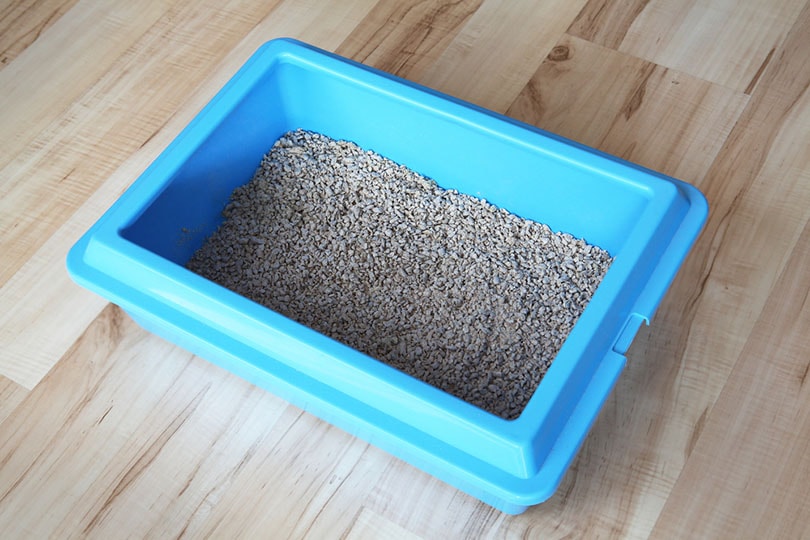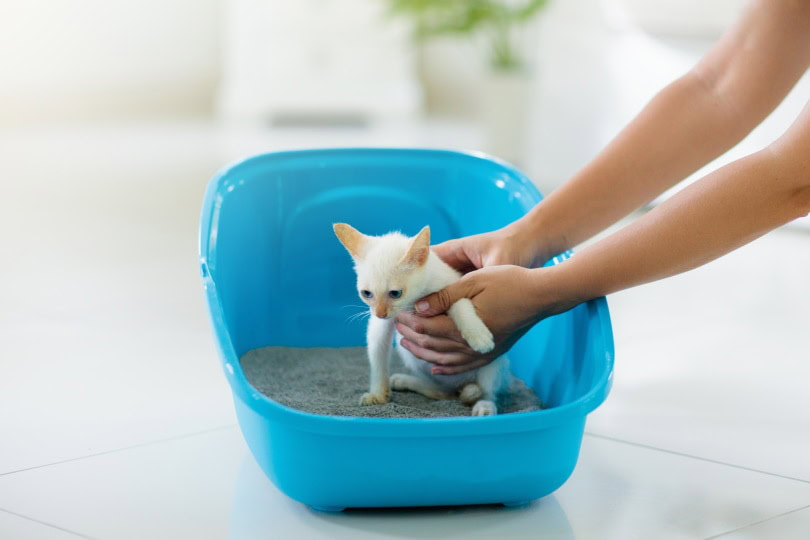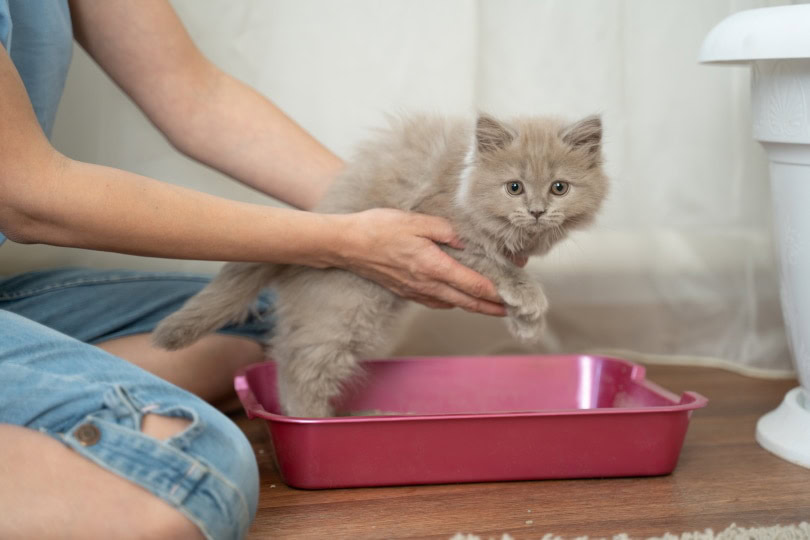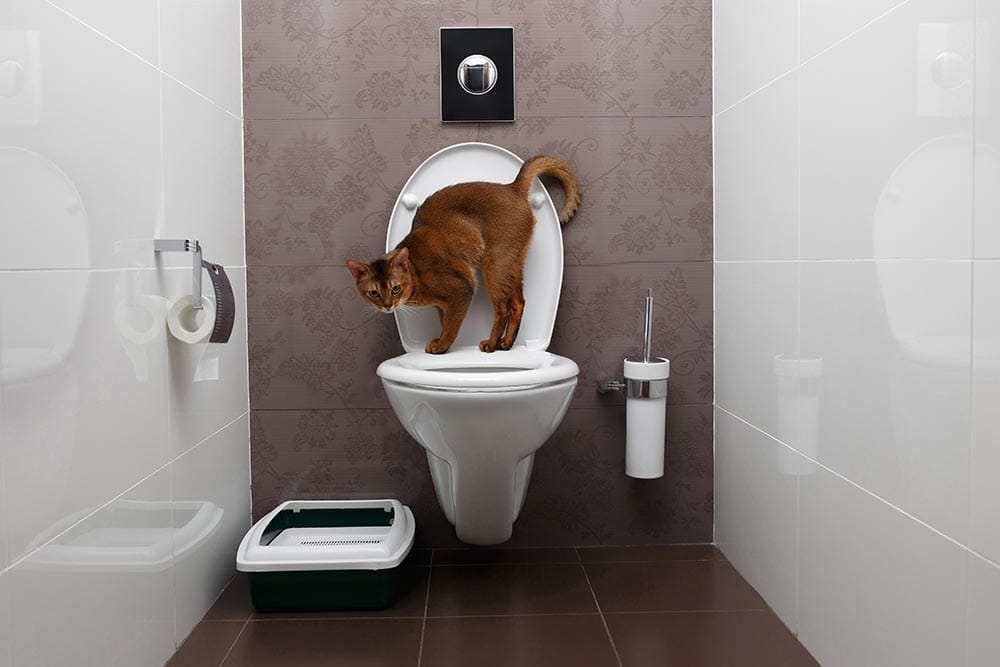VET APPROVED

The information is current and up-to-date in accordance with the latest veterinarian research.
Learn more »Click to Skip Ahead
If you have recently adopted a kitten, one of the first things you might need to do is train them to use a litter box. Luckily, cats get into this habit very easily, so it shouldn’t be a difficult task, and if you keep reading, we will provide you with a step-by-step guide to do just that. We’ll also cover the tools you need and alternatives you can use along with the step-by-step tutorial.

Do I Need to Hire a Professional?
In the majority of cases, professional help is not necessary. Most cats are born with the instinct to cover their poop and actively seek out a spot where it’s possible to do so. Since there are not many places in your home suitable for this task besides the litter box, your cat will likely find it quickly and use it properly without any additional instruction.
The Equipment You Will Need
The only equipment you need to train your cat is a litter box, a scooper, and the cat litter.
1. Litter Box
There are dozens of brands of litter boxes available, and the kind you get is mostly a matter of personal choice, but there are a few things to remember. Soft cheap plastic scratches easily when the cat digs. These scratches hold urine and cause the litter box to smell bad. A harder, higher-quality plastic will resist scratches, and you will use it longer before it starts to have an odor.
If your cat doesn’t have mobility issues, a litter box with high sides can be beneficial, as it helps reduce the possibility of litter being kicked onto the floor.
Covered litter boxes retain even more litter, and they can also keep the smell inside, but they can also create an unpleasant bathroom experience for your cat, and it may choose not to use them. It might even choose to go on the floor instead. Covered litter boxes are also bad for cats with respiratory issues because there tends to be a lot more dust.
We recommend the largest litter box you can afford, which will fit in your home once your cat is big enough to get into it. Even though your cat is small now, it will grow, and the extra space will make it more comfortable and keep more litter inside. While your kitten is too small for a standard litter box, small cardboard trays that usually hold cans of soda or beer work extremely well and allow the kitten to walk in.

2. Scooper
You can find litter scoopers in almost any grocery store or pet store. It’s essentially a slotted spoon. It allows you to pick up the poop and clumps while letting the finer sand-like litter pass through so you can use it again. We recommend something sturdy and durable that feels comfortable to use.
3. Litter
Litter is where you’ll find the largest assortment of different kinds. You can find wood litter, walnut litter, paper litter, and more, but the most common are clay and silica gel litter. Most clay litters clump into a ball when urinated on, so it’s easy to scoop out. It’s also highly absorbent and does a fair job masking odors from poop if your cat covers it. We recommend starting with clay and then trying different kinds because they each have their pros and cons. For instance, clay is extremely dusty, and after a few months, you may notice a film on objects near the box.
No matter what kind of litter you use, bad smells often linger. That's where an effective litter additive like Hepper's Advanced Bio-Enzyme Cat Litter Deodorizer can make a big difference.
- Bio Enzymatic Cat Litter Freshener - Smart formulation uses natural ingredients eliminating cat...
- Save Money - Stuff for cats isn’t the cheapest. With this litter box odor eliminator, you’ll...
- Every Litter, Every Surface - Are you afraid this additive won’t work on your litter? Fear not!...
This biodegradable deodorizer is fragrance-free and safe for all ages of cats and types of litter. It uses bio-enzymes to naturally get rid of odors and help your litter last longer.
At PangoVet, we've admired Hepper for many years, and decided to take a controlling ownership interest so that we could benefit from the outstanding designs of this cool company!

The 3 Steps for Training Your Cat to Use the Litter Box
1. Allow Your New Pet To Explore Its Environment
Most cats are extremely curious and will explore your house in a very short time. They have excellent memories, and even as kittens, they will seek out perches, hiding spots, and of course, the litter box. Allowing your cat to explore is the best way to let your cat’s instincts work, and we’re confident that your cat will quickly find and use the litter box or boxes that you place for them.
2. Place the Cat Inside the Litter Box
For one reason or another, some kittens might have trouble finding the box at first, which can result in them going where they are not supposed to. If this is the case in your home, we recommend gently picking up the cat and setting it down inside the litter box when they first wake up in the morning, a few minutes after eating and drinking, and a play session. Your cat will likely take over from there, and it will remember the path back when it needs it again.

3. Reward Desired Behavior
When your cat successfully uses the litter box, reward them with positive reinforcement like treats and praise. Your cat will learn that using the litter box results in good things, encouraging them to continue doing it. Remember that training is not an instant process, so you will need to have patience and allow your cat to learn at their own pace.
Here is a great video from Petco demonstrating many of the things we talk about here.


Summary
Training your kitten to use the litter box is quite easy, and most of them will figure it out without help. Positive reinforcement techniques are very effective, and we’ve never had a cat not learn to use the litter box with this method. Make sure your cat doesn’t have difficulty getting in but get the biggest box you can. Cats will quickly start to kick litter out of the box and onto your floor, which can make quite a mess. Choosing a low-dust clay litter is also a good idea since kittens have tiny nasal passages.
Related Reads:
Featured Image Credit: Tiplyashina Evgeniya, Shutterstock












